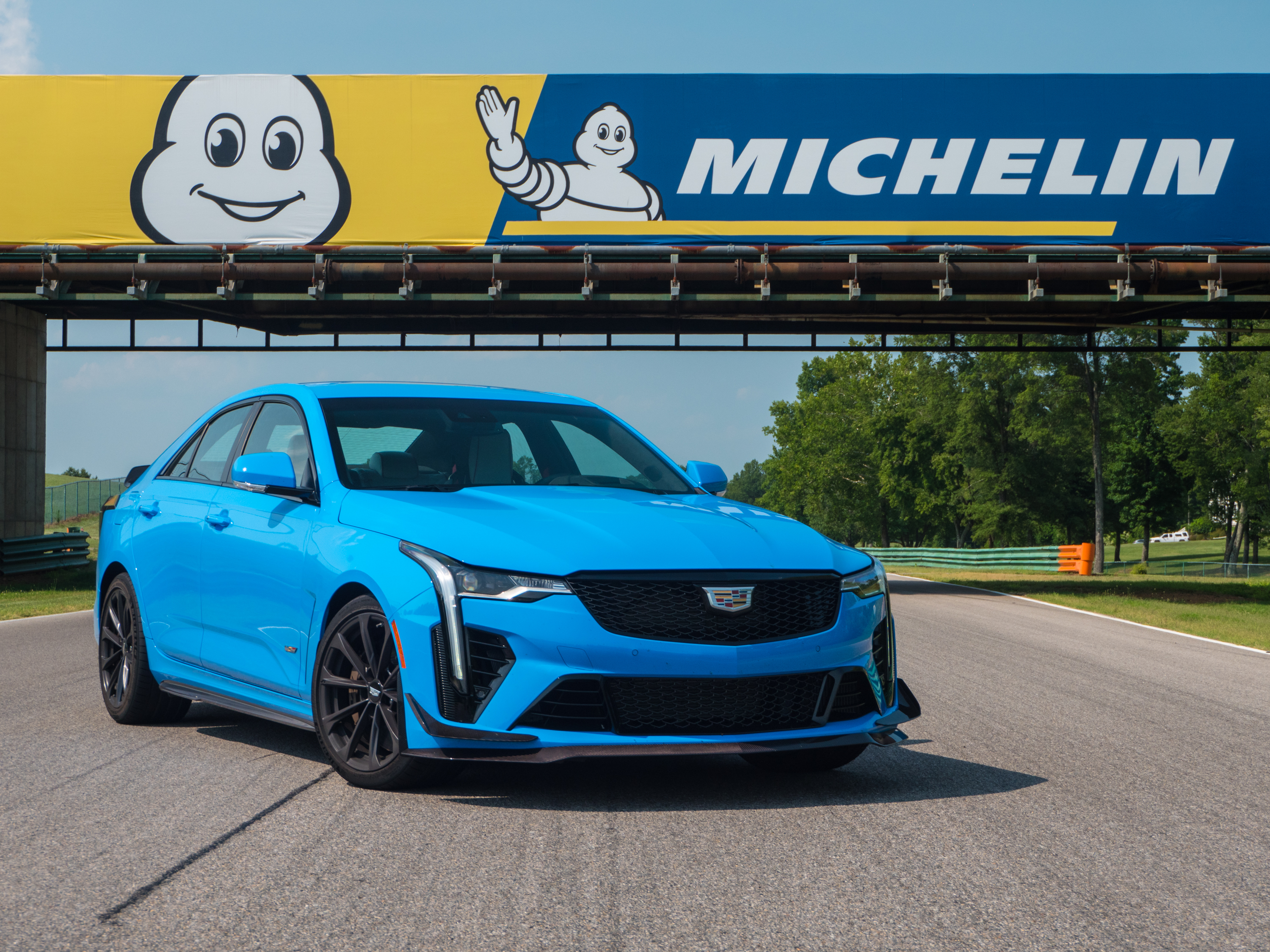 This is Cadillac's final generation of internal combustion-powered sports sedans, and the company is going out on a high with the 472-hp CT4-V Blackwing. In fact, this might be my new favorite performance sedan.Jonathan Gitlin
This is Cadillac's final generation of internal combustion-powered sports sedans, and the company is going out on a high with the 472-hp CT4-V Blackwing. In fact, this might be my new favorite performance sedan.Jonathan Gitlin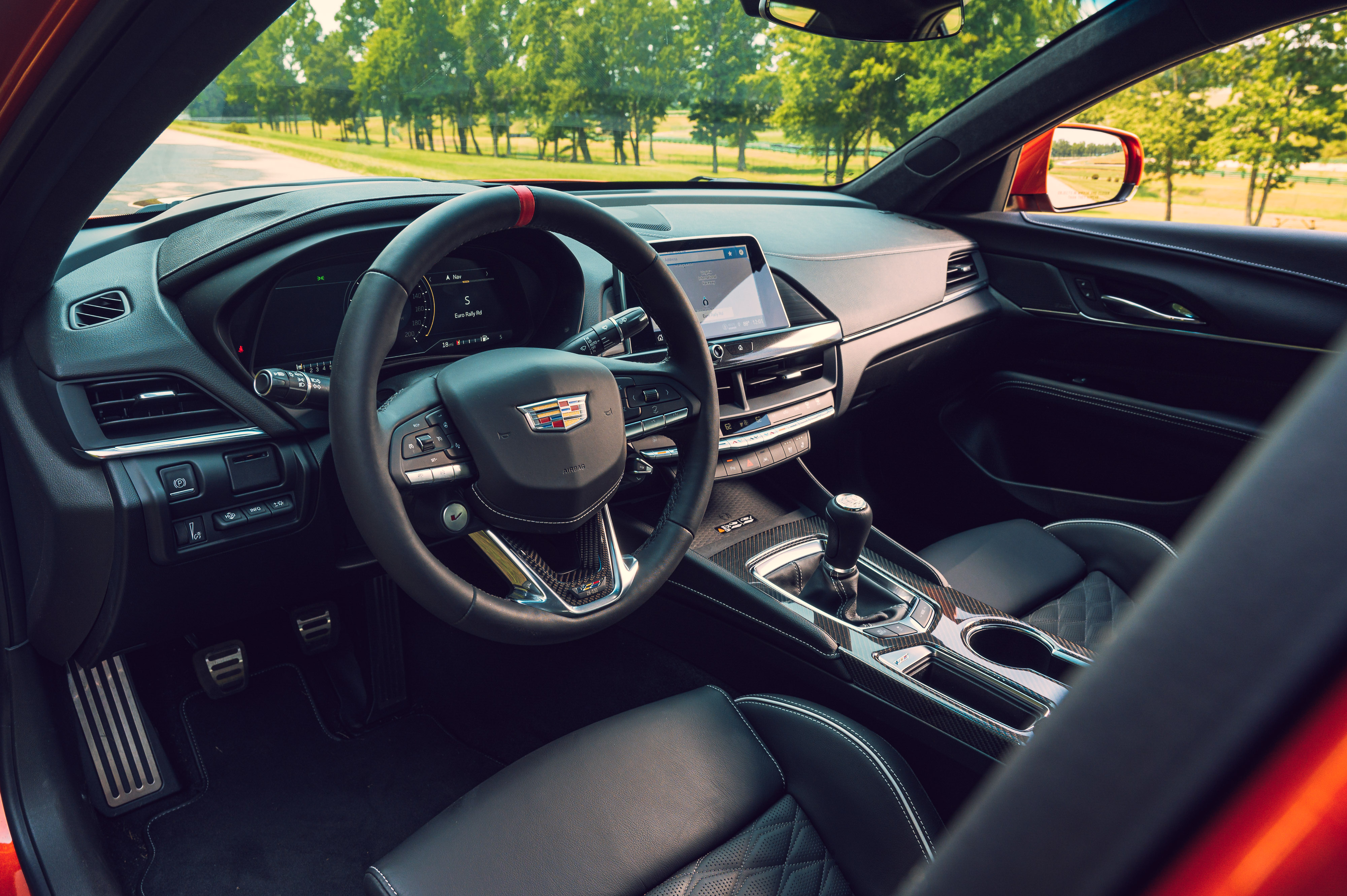 The CT4-V Blackwing comes with either a six-speed manual or a 10-speed automatic. The cabin ergonomics are good, and the seats are supportive on track.DW Burnett/Cadillac
The CT4-V Blackwing comes with either a six-speed manual or a 10-speed automatic. The cabin ergonomics are good, and the seats are supportive on track.DW Burnett/Cadillac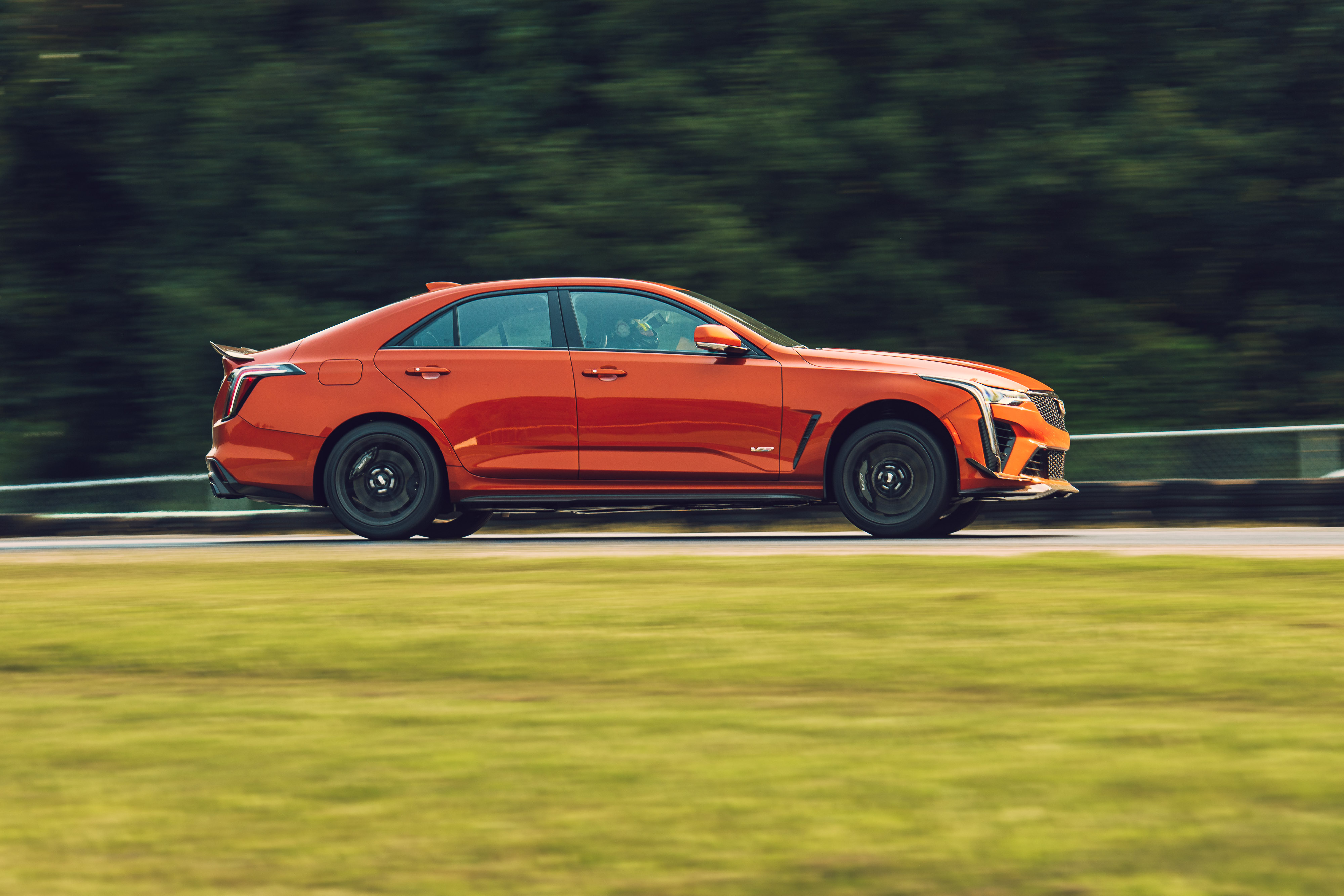 The CT4-V Blackwing should have made its debut more than a year ago, but then came the pandemic and the chip shortage.DW Burnett/Cadillac
The CT4-V Blackwing should have made its debut more than a year ago, but then came the pandemic and the chip shortage.DW Burnett/Cadillac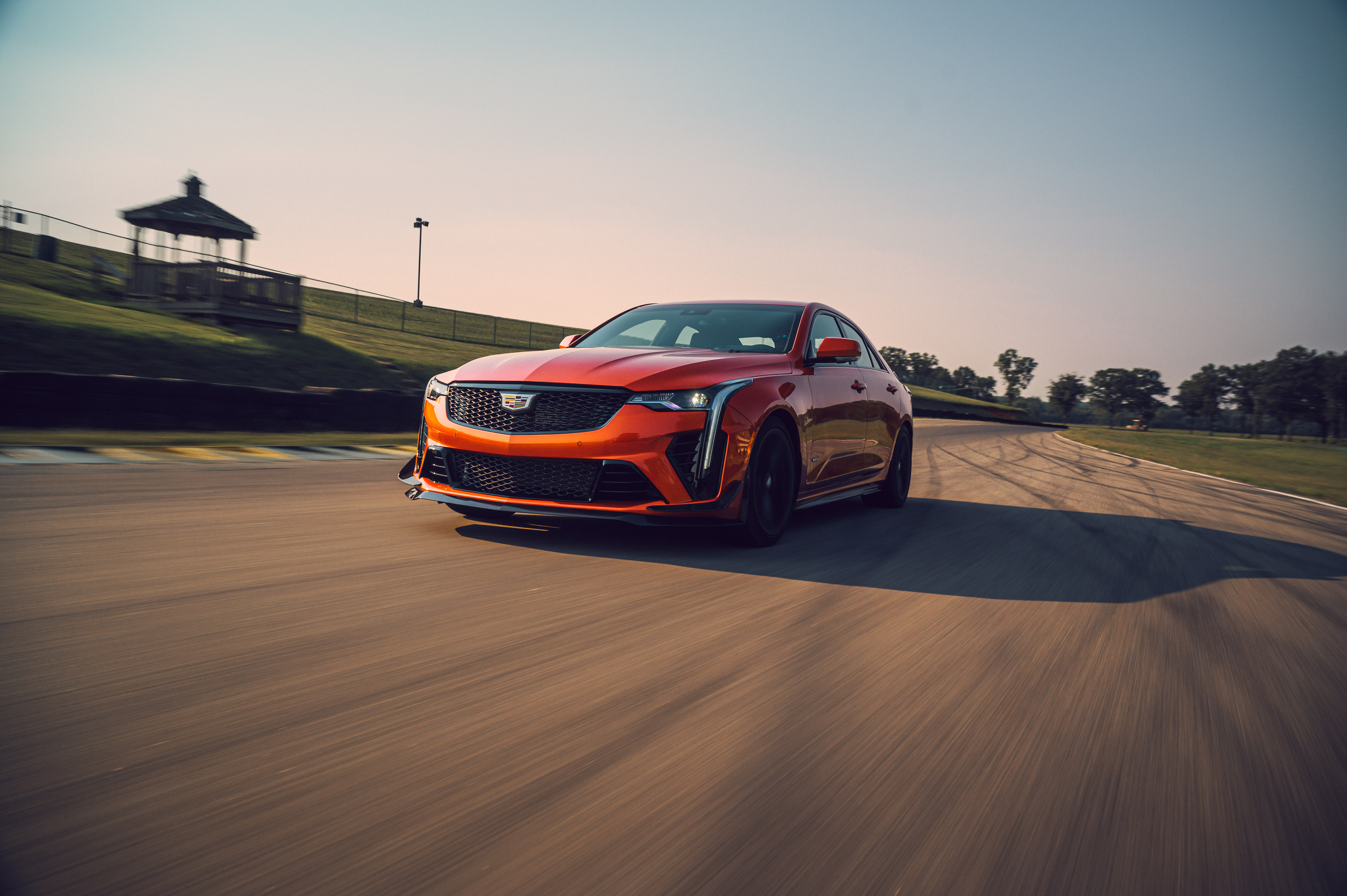 The CT4-V Blackwing has some very clever driver aids, but you don't have to be a professional racing driver to turn them off and still be quick, because this is a very balanced car.DW Burnett/Cadillac
The CT4-V Blackwing has some very clever driver aids, but you don't have to be a professional racing driver to turn them off and still be quick, because this is a very balanced car.DW Burnett/Cadillac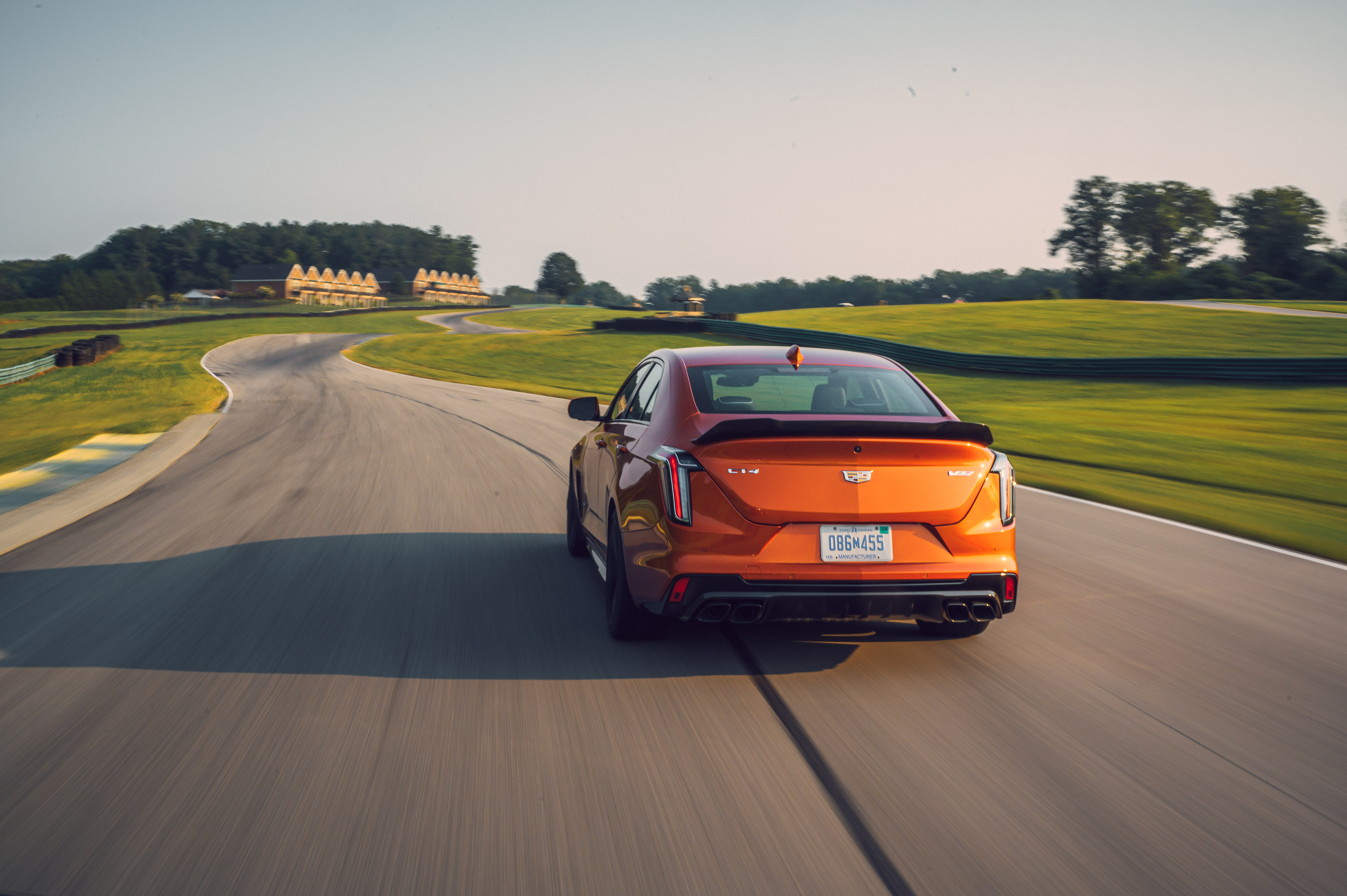 Riding the apex curbs through the climbing Ses is a good test of a car's damping and ride, and the CT4-V Blackwing did just fine. (Also, I like the brrrrrrrrr noise a car makes as you ride the curbs.)
Riding the apex curbs through the climbing Ses is a good test of a car's damping and ride, and the CT4-V Blackwing did just fine. (Also, I like the brrrrrrrrr noise a car makes as you ride the curbs.)
ALTON, Va.—The age of the internal combustion engine is drawing to a close. Cadillac is marking the occasion with a pair of V-series performance sedans that will be the last of their kind to run on gasoline. We have to wait another week to tell you about one of them, but as of today, all discussion of the 2022 CT4-V Blackwing is fair game. That means I am now allowed to say that Cadillac's final-ever V6-powered performance car might actually be its best-ever performance car. Like other cars of this kind, the Blackwing is overkill for the street. But when clad in downforce-generating carbon fiber dive planes and splitters, it will engage and reward you on track like few others.
V-Series makes its last gasoline cars
First introduced in 2004, the V-series cars are Cadillac's answer to Audi Sport's RS cars, the machines of BMW's M Division, and the mighty Mercedes-AMGs. But when the American luxury brand first revealed the CT4-V to the world in May 2019, I declared it "more jalapeño than habanero." That was because its 2.7 L V6 offered just 320 hp (240 kW) compared to the 464-hp (346 kW) ATS-V it was replacing.
At the time, GM's vice president of global products told us that "not all customers want track time." That was the explanation Cadillac gave for watering things down (or alternatively broadening its appeal) with less powerful, cheaper V-series cars. But evidently Cadillac realized that some of its customers very much wanted track time—or at least something comparable to a BMW M3 or Alfa Romeo Giulia Quadrifoglio—which is why it developed the $59,990, 472 hp (352 kW), 445 lb-ft (603 Nm), 3.6 L twin-turbo V6 CT4-V Blackwing.
The pandemic and then the global chip shortage got in the way of Cadillac's plans to bring the CT4-V Blackwing to market in 2020. But Cadillac has worked through those problems, and last week we got to know the car at one of our most favorite ribbons of asphalt, Virginia International Raceway.
Three pedals and six gears, or two pedals and 10 gears?
Cadillac has made the CT4-V Blackwing available with a choice of transmissions (both of which are rear-wheel drive). As standard, there's a six-speed manual gearbox from Tremec, mated to a dual-plate clutch.
"We spent a lot of time making sure that the brake pedal, the steering, the clutch, the way the vehicle responds—everything is matched that gives you that character," said Mirza Grebovic, performance variant manager at Cadillac. "That involved ergonomics as well. We spent a lot of time on making sure that the pedals are spaced right for heel and toe, as well as we redesigned the shifter linkage to make sure it's in a great place," he said. He added that the side bolsters on the seats were another area of focus to make sure the driver is held properly in place when the Gs begin to increase.
If (like me) you've gotten rusty at heel-and-toeing, there's also an active rev match feature that blips the throttle as you downshift to make sure the engine is at the right rpm to accept the lower gear. And for those full-throttle moments, there's also a no-lift upshift function, too. "When you do a normal shift, as soon as you move the throttle away from 100 percent, they would open the wastegates and prepare the engine to run in a more efficient mode," Cadillac chief engineer Tony Roma told me.
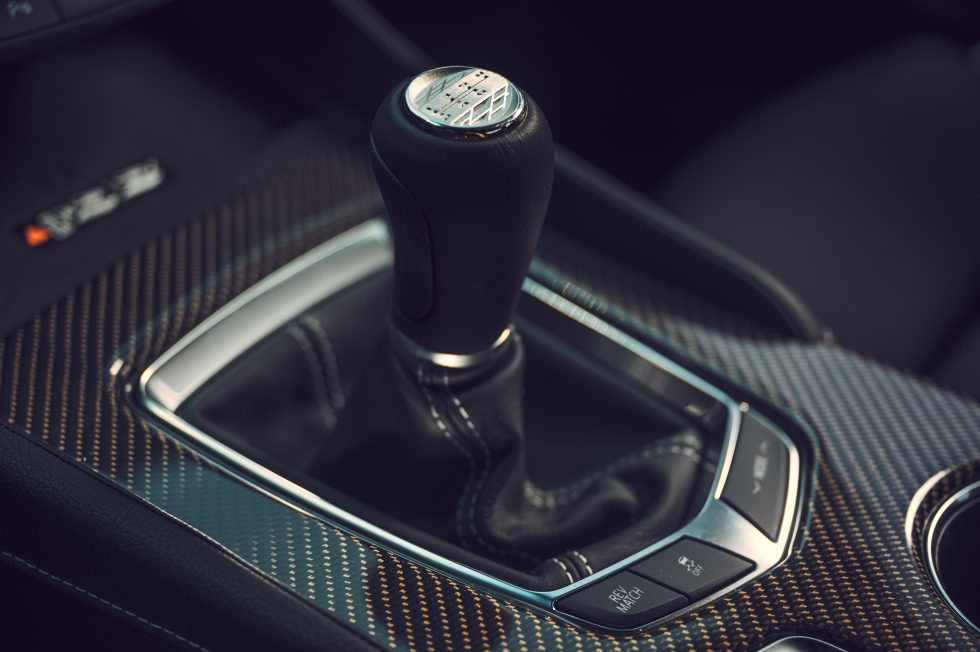
"When you hold it at 100 percent in the Blackwing, we use the clutch position sensor to tell the computer 'OK, we are doing a performance shift, allow the engine to overboost, keep the cams in the high rpm power position,' and it anticipates where the engine speed is going to be in the next upshifted gear, and it gets ready to make peak power, expecting that you're going to move the lever and drop the clutch," he told me, adding that the engine also cuts ignition very briefly as the shift is happening. Each no-lift upshift might only save 0.05 seconds, but when you think of how often you have to shift during a lap, it begins to add up.
The alternative is a 10-speed automatic, which Cadillac says is capable of changing gear ratios even faster than Porsche's fastest PDK dual-clutch transmission. You can control the gear selection via the paddle shifters on the steering wheel, or you can leave it to its own devices, letting the performance-shifting algorithm do its thing instead. You'll know when it's in this mode as a green gear icon appears on the dash. Older readers with memories of what three- and four- (and even five- and six-) speed automatic transmissions used to be like will probably find this hard to believe, but the programming on the 10-speed is truly remarkable, refusing to get wrong-footed even when driving hard on track.
Six speeds for the street
For street driving, my pick would be the six-speed manual CT4-V Blackwing. The gear ratios are well-spaced, and the Blackwing's 472 hp is more than sufficient to overtake whatever troublemaker is between you and the horizon when the single yellow line goes from solid to dashed. And the ride comfort is perfectly acceptable in either Tour (the most laid-back drive mode) or Sport. The visibility and ergonomics from the driver's seat are good, with even the far edge of the touchscreen infotainment system within reach (although you can also interact with it via the physical controls on the center console).
But as I've said before and will doubtless say again, cars like this are really too fast to enjoy properly on public roads (and too thirsty to use as daily drivers). The Blackwing's Michelin Pilot Sport 4 tires—a CT4-V Blackwing-specific variant—will allow it to reach lateral G-loads of at least 1.5 Gs, and exploring that envelope in the presence of oncoming traffic is irresponsible, even on roads as epic as the Tail of the Dragon in Tennessee or Angeles Crest Highway in California. Which is why I think the manual is the better option for a road-going Blackwing, since the added driver engagement of working the stick and pedals is there even at school-zone speeds.
The track is where this one really shines
Oncoming traffic is not something you have to worry about at a track day, though. Neither are speed limits—which is good to know, considering the CT4-V Blackwing's 189 mph (305 km/h) top speed and that flat-shift capability. At the track, the car belongs in V-mode, which, as you might imagine, sharpens the responsiveness of the throttle and magnetorheological dampers (now in their 4th generation and quicker to react than ever before). V-mode speeds up shift times and tells the car's vehicle dynamics software that it's time for some action.
Precision Traction Management is the name of the electronic safety net watching over you—if you want it. It's constantly being fed information from sensors around the car and taking note of things like steering angle, slip angle, lateral and longitudinal acceleration, throttle position, brake pressure, and so on, with different intervention thresholds depending on your drive mode.
The PTM's interventions often felt subtle, still allowing the Blackwing to yaw a little here and there, and it wasn't until I checked the telemetry (via the onboard Cosworth Personal Data Recorder) that I even noticed it offering a small helping hand to stabilize the car as it went through the quick right-left-right transition from the exit of turn 5 to the exit of turn 6.
But you can just as easily dial it all back to (almost) zero by toggling PTM up into one of the two race modes via the switch on the steering wheel. In these modes, only traction control remains enabled. Even then, it's only an issue on corner exits (to differing degrees depending on whether you're in Race 1 or Race 2). And Race 1 is when I discovered just how well-sorted the CT4-V Blackwing's dynamics were.
VIR is a track with some pretty high-speed corners, particularly the 3.3-mile (5.3 km) Full Course and the inaccurately named start-finish straight (it's more of a parabola that sweeps from the exit of turn 16 past the pit lane and into the braking zone for turn 1). I'm not sure whether the Blackwing's aero was generating meaningful downforce at the speeds I was driving—Cadillac says it generates 169 lbs (77 kg) of downforce at 180 mph (290 km/h)—but at 130ish mph (210ish km/h) the car was stable and balanced, as it was through South Bend at the far side of the circuit.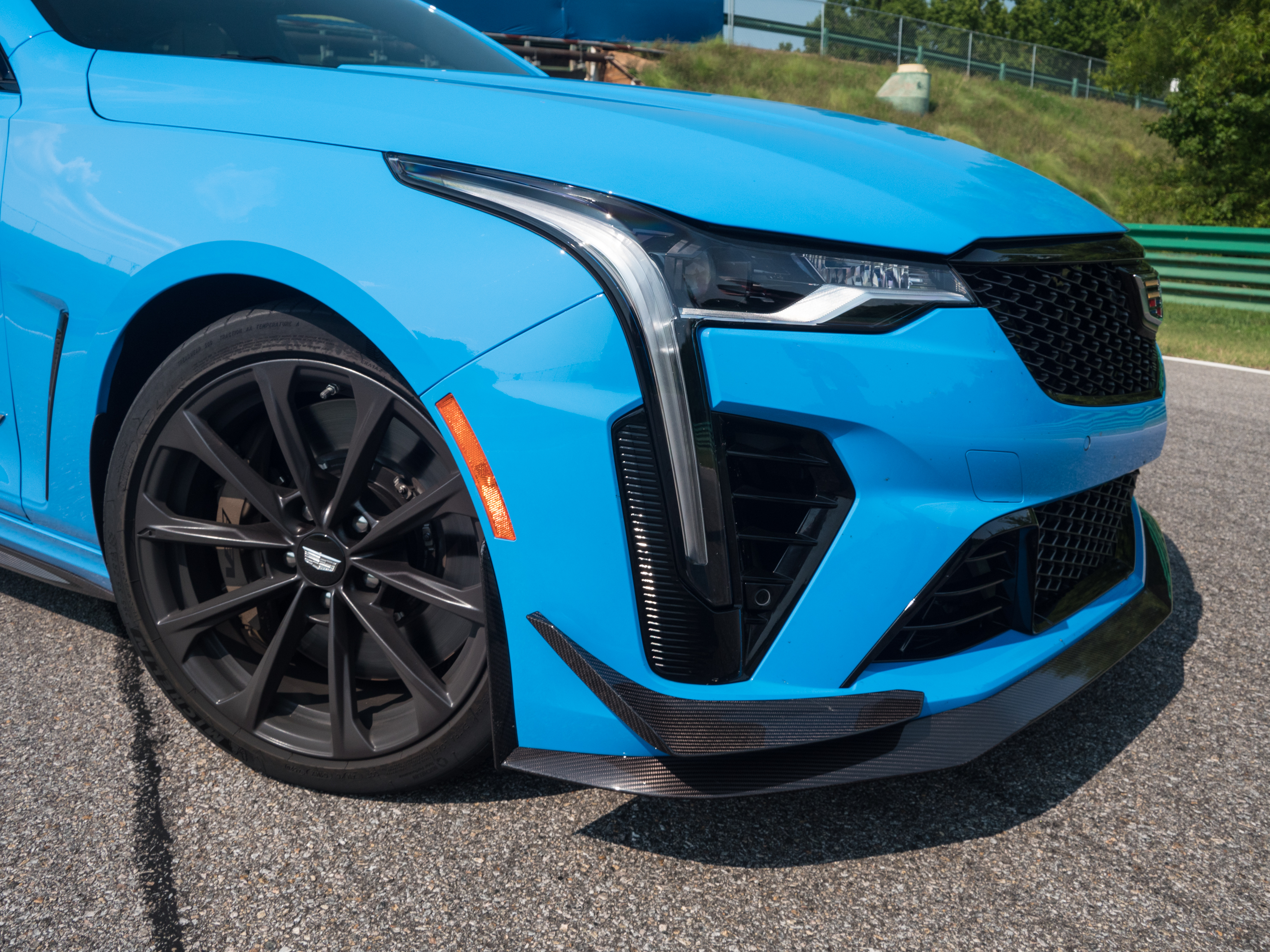 The CT4-V Blackwing has a distinctive vertical daylight running light, and a number of functional scoops and vents feed cold air to the engine and brakes before channeling it underneath the car.Jonathan Gitlin
The CT4-V Blackwing has a distinctive vertical daylight running light, and a number of functional scoops and vents feed cold air to the engine and brakes before channeling it underneath the car.Jonathan Gitlin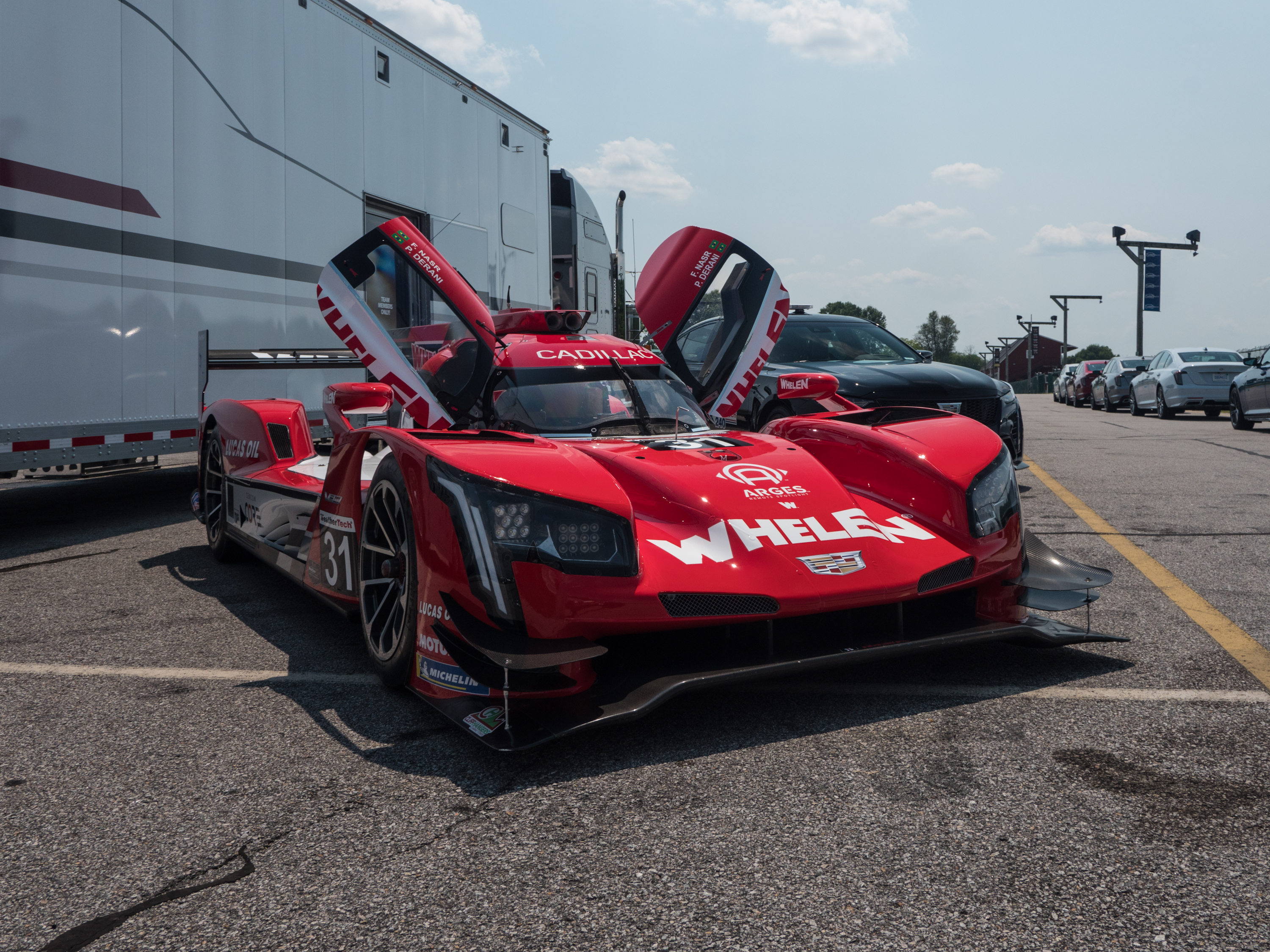 Do you see a family resemblance to the Cadillac DPi-VR?Jonathan Gitlin
Do you see a family resemblance to the Cadillac DPi-VR?Jonathan Gitlin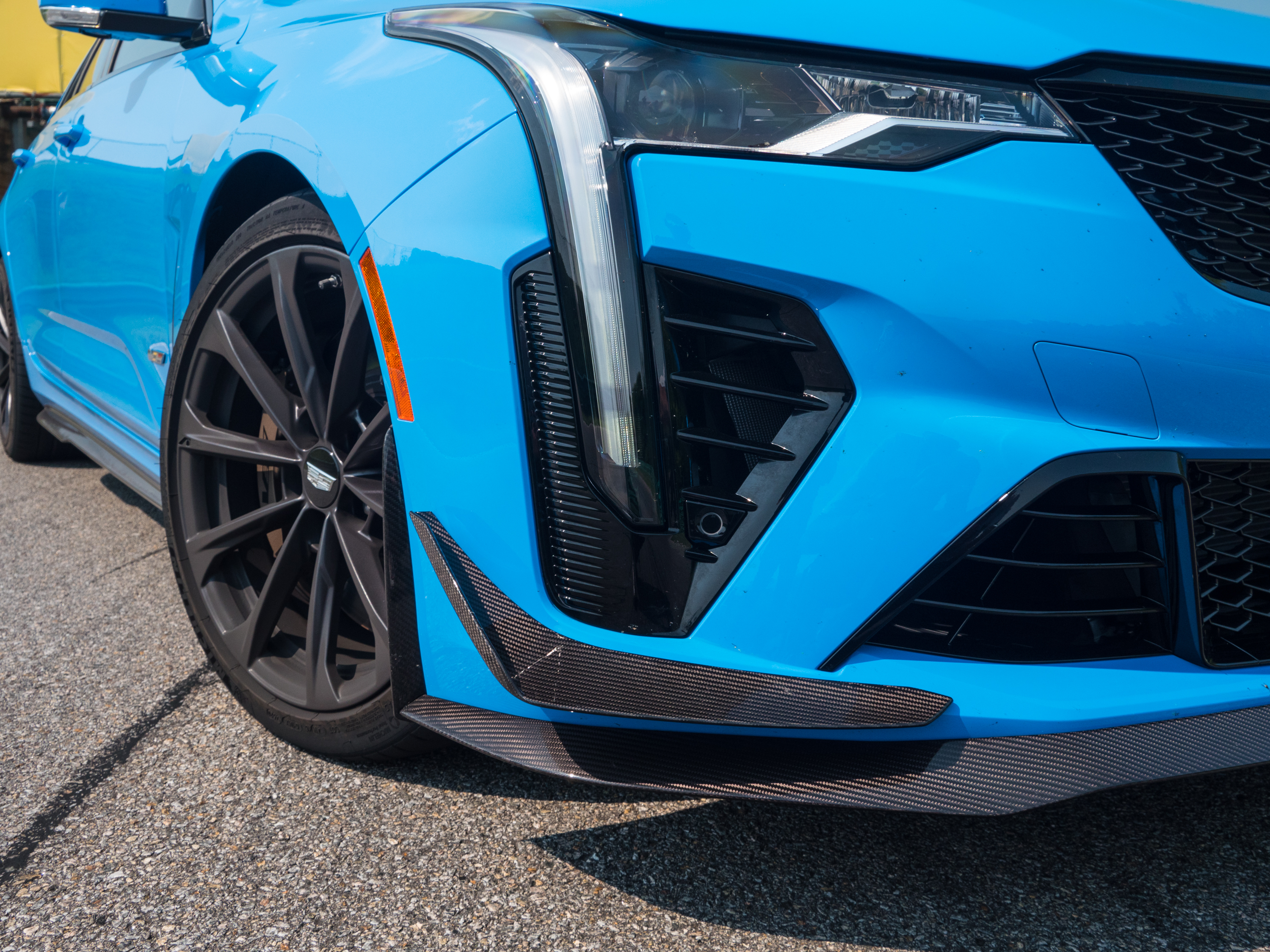 A closer look at the CT4-V Blackwing's front aero. There are also elements under the splitter that channel air along the flat underbody to the rear diffuser.Jonathan Gitlin
A closer look at the CT4-V Blackwing's front aero. There are also elements under the splitter that channel air along the flat underbody to the rear diffuser.Jonathan Gitlin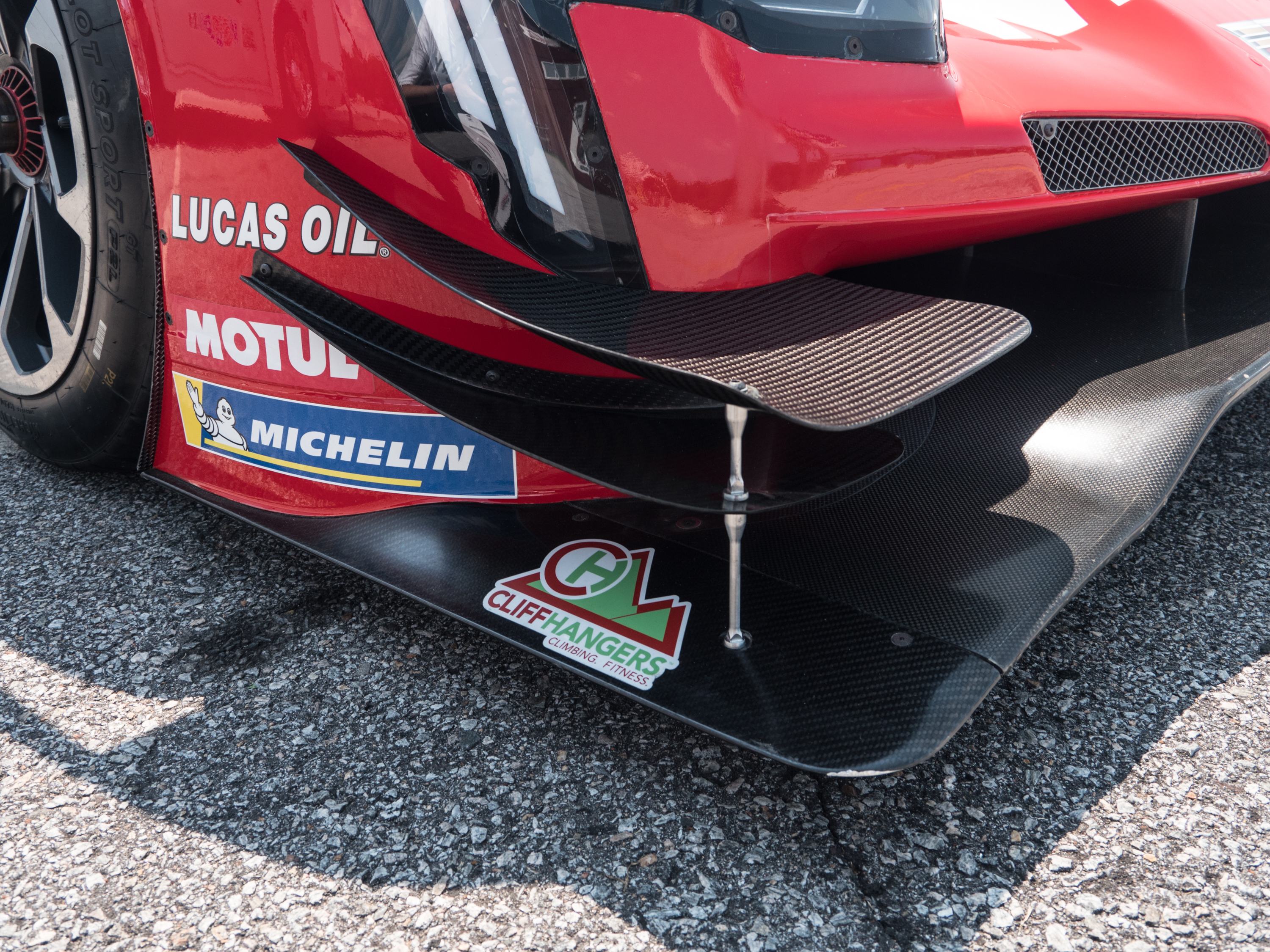 The race car's dive planes are much sharper as there are no pedestrian safety requirements in the IMSA technical regulations.Jonathan Gitlin
The race car's dive planes are much sharper as there are no pedestrian safety requirements in the IMSA technical regulations.Jonathan Gitlin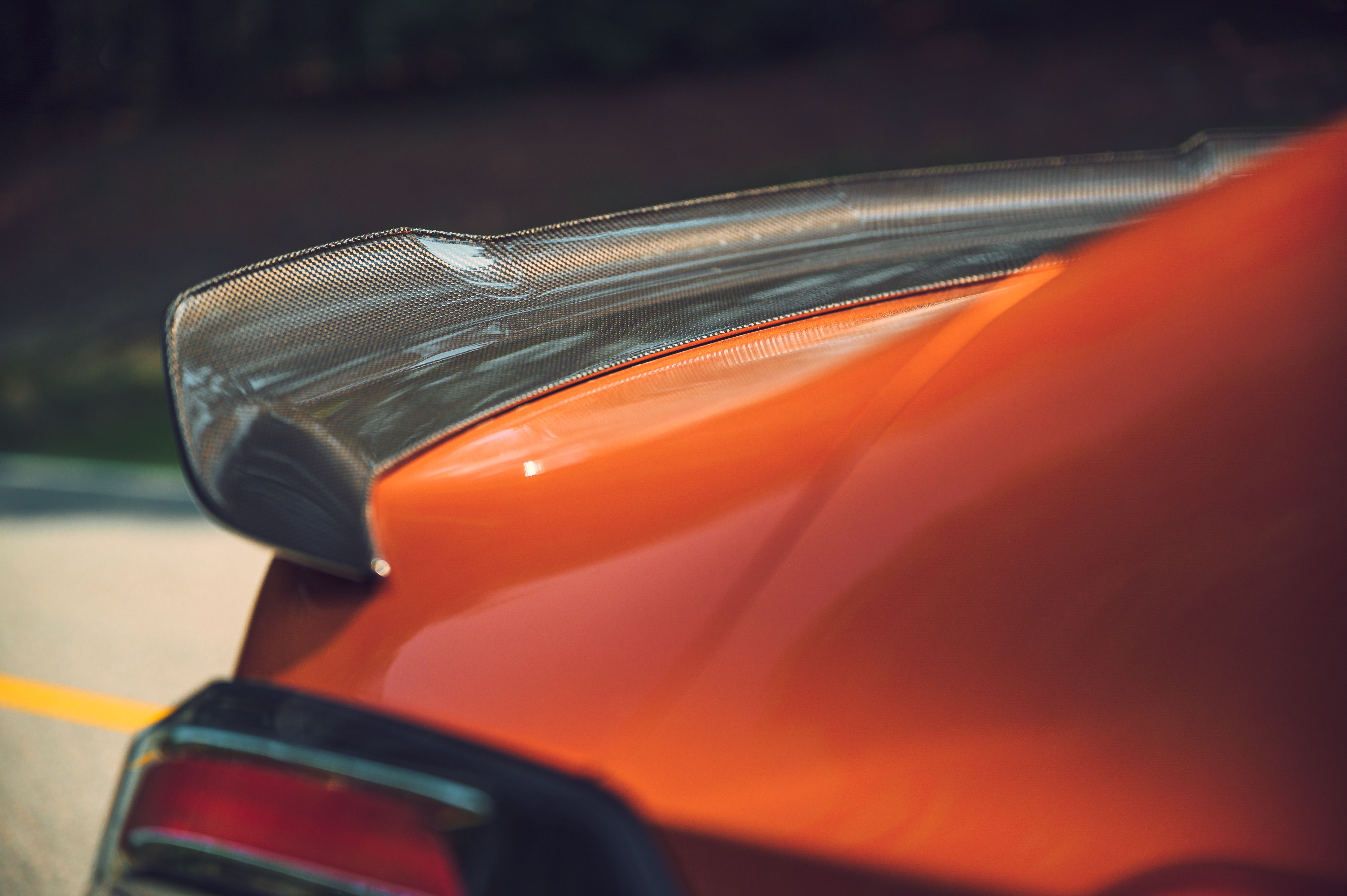 The shape of the rear spoiler of the CT4-V Blackwing is the product of many hours in the wind tunnel and many computational fluid dynamics simulation runs.DW Burnett/Cadillac
The shape of the rear spoiler of the CT4-V Blackwing is the product of many hours in the wind tunnel and many computational fluid dynamics simulation runs.DW Burnett/Cadillac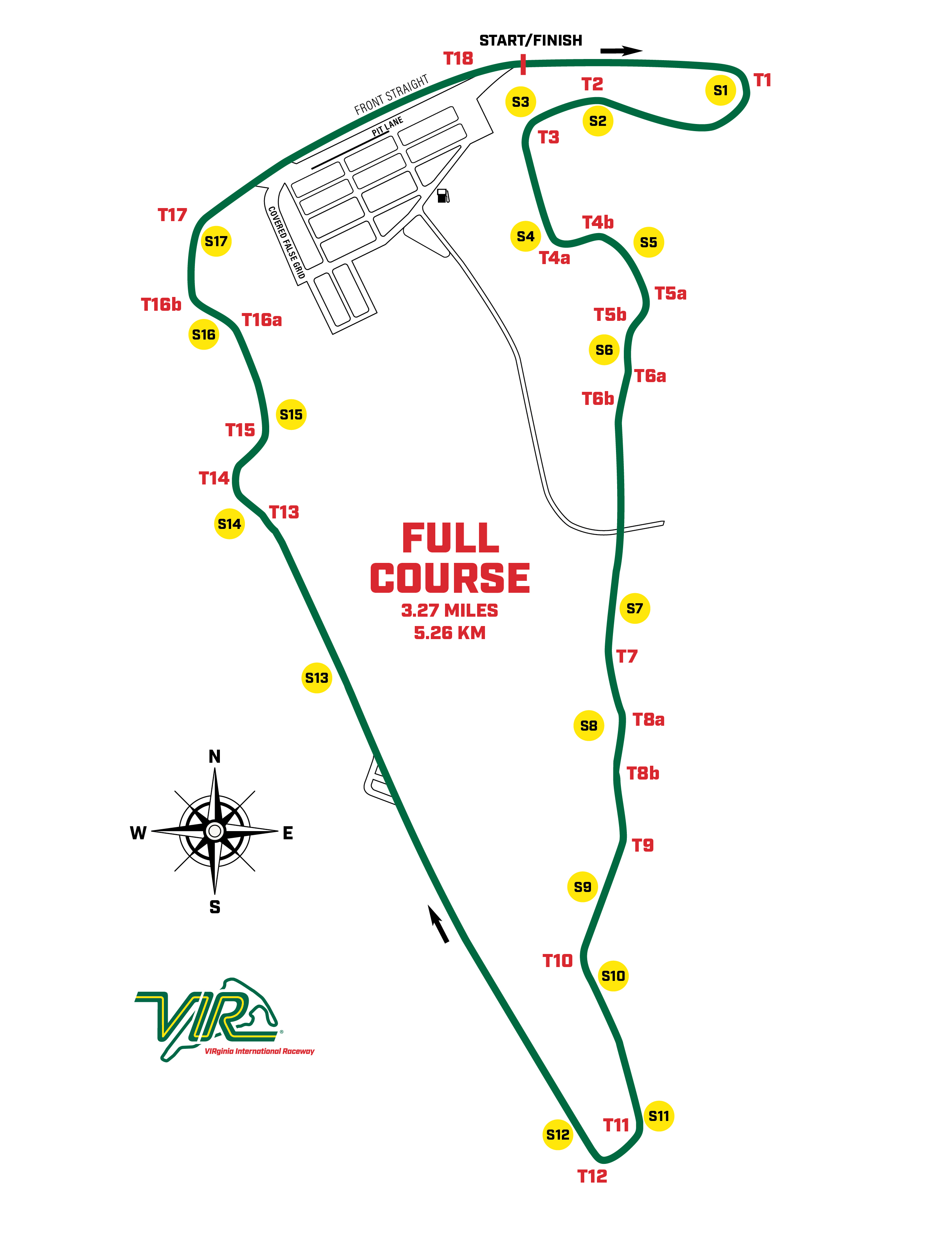 VIR's Full Course. Cadillac (probably wisely) added a temporary chicane along the back straight.Virginia International Raceway
VIR's Full Course. Cadillac (probably wisely) added a temporary chicane along the back straight.Virginia International Raceway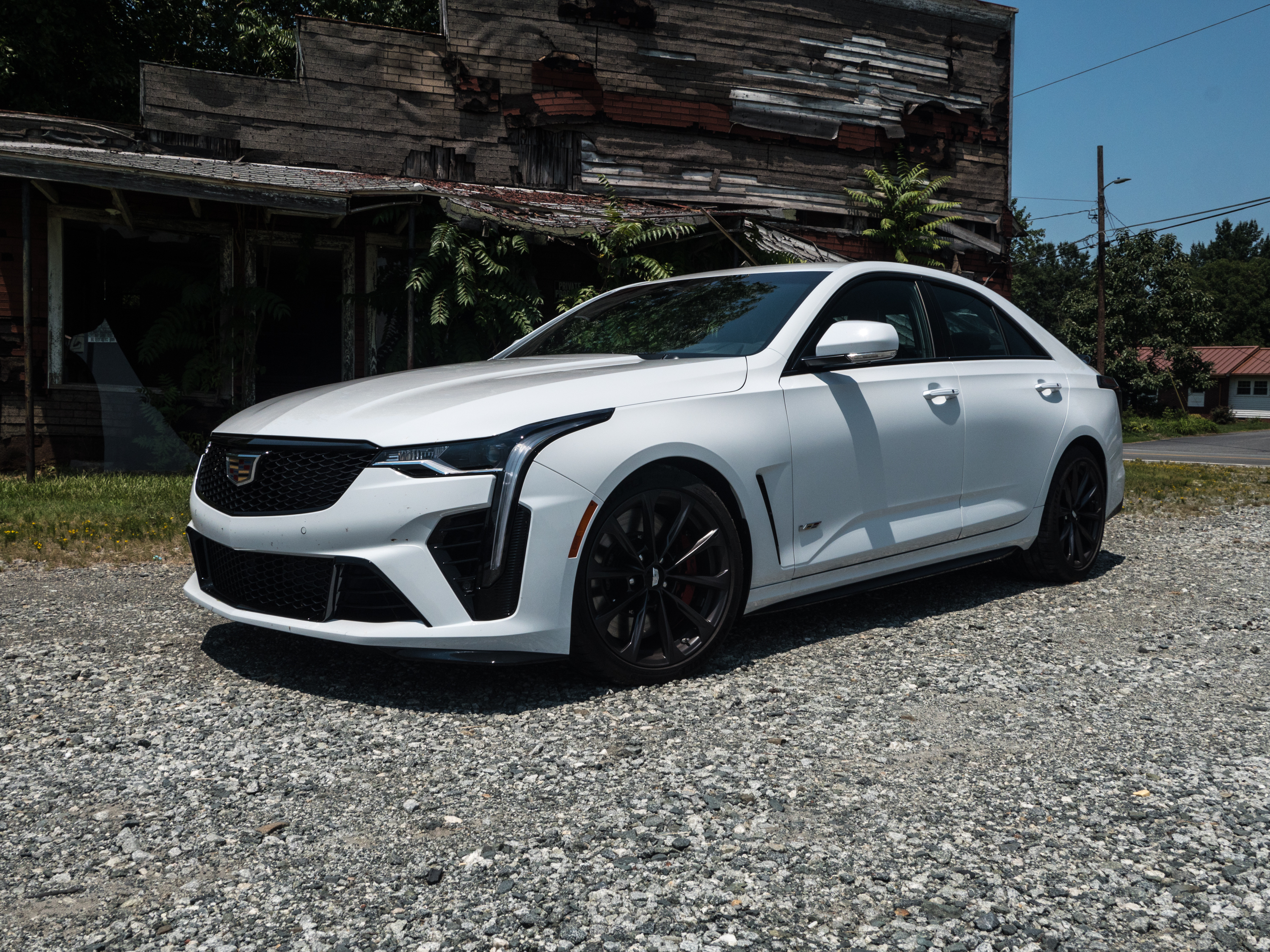 You don't have to get the carbon fiber packages. And you don't have to drive a CT4-V Blackwing on track. But to not do so is missing the point.Jonathan Gitlin
You don't have to get the carbon fiber packages. And you don't have to drive a CT4-V Blackwing on track. But to not do so is missing the point.Jonathan Gitlin
You can’t drive like this in public
As engaging as the six-speed is, my CT4-V Blackwing would come with a 10-speed auto. As mentioned, it's a remarkably clever transmission that knows when to shift quickly and when a slower shift might be preferable (in the middle of a corner with a sustained lateral load, for example).
Otherwise, you can also just take control yourself via the paddle shifters. Part of my reasoning is that I like changing gears with paddle shifters, particularly on track, as it allows me to focus more on other aspects of my driving, especially braking. And since there's no clutch pedal to work, I can do that braking with my left foot.
Did I mention that the brakes were extremely effective? The front discs are 15 inches (380 mm) in diameter, with six-piston calipers; at the rear, four-piston calipers arrest 13.4-inch (340 mm) discs. At VIR, after South Bend, the track dips down then up again for the braking zone of Oak Tree. Here I registered more than 1.5 Gs braking, which I now know is enough to make me feel queasy. (Cadillac asked the assembled press corps to brake early into turns 13 and 1, which could otherwise have generated similarly violent deceleration events.)
An entry-level CT4-V Blackwing starts at just under $60,000 for a six-speed or $63,165 for the automatic. This model also comes with a pile of standard equipment—driver assists including adaptive cruise control and physical controls for the infotainment, to name a couple.
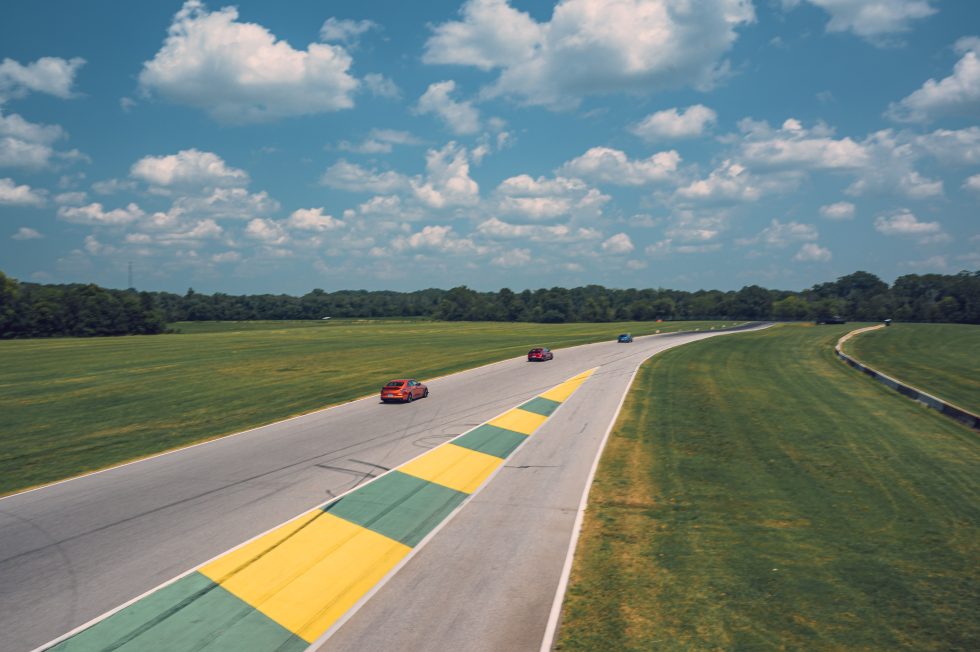
If you plan to use it as a track car, be prepared to spend another $4,350 on the carbon fiber 1 package, which adds the dive planes, front splitter, and front-wheel well deflectors. And the rear spoiler (don't forget that), as well as the $1,600 performance data and video recorder. The carbon bits are functional, but they also look cool. Meanwhile, telemetry is an important tool for both amateur and professional drivers. The ongoing lack of a Mac version of the Toolbox software is frankly inexcusable, though, GM and Cosworth.
And honestly, there's no point buying a Blackwing unless you plan to track it. Cadillac's engineers put plenty of time and effort into this car (and the V8 CT5-V Blackwing that you can read about next Tuesday). Cadillac knows the Blackwings would be its final-ever gasoline-powered V cars, and you can only truly appreciate that work in the absence of traffic or speed limits.
Listing image by Jonathan Gitlin
Cadillac saves its best for last: The 2022 CT4-V Blackwing - Ars Technica
Read More

No comments:
Post a Comment